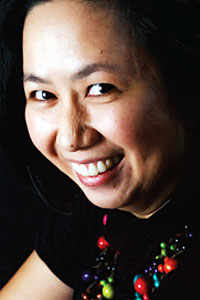As children, we were taught to eat every single grain of rice on our plate. This was to treasure the hard work of rice farmers, as well as pay respect to rice: our dietary staple and part of our culinary heritage.
Today, the teaching and practice remains the same in most Thai households. But, what's happening in the greater, general food scene doesn't seem to comply with the graceful notion we're all familiar with.
Now grown, I've realised there's an enormous amount of food waste occurring almost everyday.
For the sake of global food security, the United Nation's Food and Agriculture Organisation (FAO) launched a Save Food campaign a couple months ago in Thailand to raise awareness of food waste and reduce food loss.
Apparently, up to 30% of all food (1.3 billion tonnes annually) is spoiled or squandered before it is consumed. Whereby, almost a billion people worldwide remain hungry and malnourished. The statistic represents a waste in the value chain development of the labour, water and energy that goes into producing that food.
I first thought that such a laudable initiative would directly target the restaurant industry and hotel banquets. And that it would change the way the commercial sectors treat their produce. How wrong I was.
The FAO experts basically want individual consumers to change their food consumption habits by planning their meals more carefully and thinking hard before ordering or purchasing food. General consumers should also think before throwing away food when it is still edible.
Who are the FAO trying to kid? Themselves? Most individual consumers, basically the grocery shoppers whom I believe the FAO are targeting, have one thing in common: the housewives' instinct. When it comes to family meals on a daily basis, we (speaking at least for dozens of friends, colleagues and family members) usually create meals using up the ingredients available in our fridge. We shop with a well-calculated shopping list and try not to over purchase.
Housewives are thrifty. None of us want to throw our money away.
And when we eat out, we make sure we don't order more than what we can finish and that our spouse and offspring always clear their plates. Otherwise, we ask for doggy bags even when we're not the one to pay the bill. It is simply because we can't stand seeing the food go to waste.
Obviously the amount of food waste is much more monumental on the restaurateur side.
I know for a fact that many five-star hotels get rid of the food from their buffet lines when the meal hours end by simply throwing it all away. They do the same with banquet leftovers. Employees, following a strict code of conduct, aren't allowed to bag them to take them home either.
Fast food chains tend to discard their food after a specific period of shelf life, too. Typically fried chicken has a 10-minute display life, while French fries can stay for seven minutes before being thrown away.
Top-notch stand-alone restaurants have also helped increase the industry's food waste. Very recently I came across an expensive soup dish prepared by simmering a colossal amount of cabbages. Only the tiny cores of the cabbages appeared on the plates and approximately 95% of the vegetables were thrown out.
Let alone the fact that this unconsumed food, and the hidden treasure the waste bins of these five-star, Western-standard kitchens contain, could feed a great number of folks in need.
I think FAO is wasting their time and resources trying to raise awareness among the wrong audience.
I'm not saying that Thai people are more prudent diners than Westerners, but because of our humble background, we've long-been familiar with sustainable eating, particularly the lately popular gastronomic concept of "nose to tail".
At a household level, it's common to eat fish heads, fish eyes, ox tails, pig ears, pig brains, offal, chicken feet, duck beaks and duck webs. Even with fruit and vegetables, we've found ways to cook delicious dishes from watermelon rinds, jack fruit seeds, coconut tree tips and banana husks.
This is not to mention that our favourite jub chai (mixed vegetable stew), a classic family fare, is made from leftover dishes and ingredients.
So is anyone still believing that Thais, as individual consumers, are wasting our food?
Vanniya Sriangura is a senior writer and food columnist of Life.
